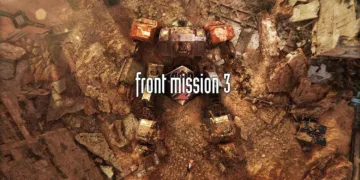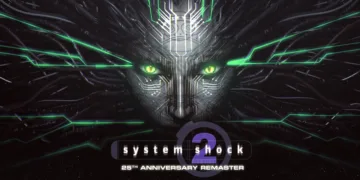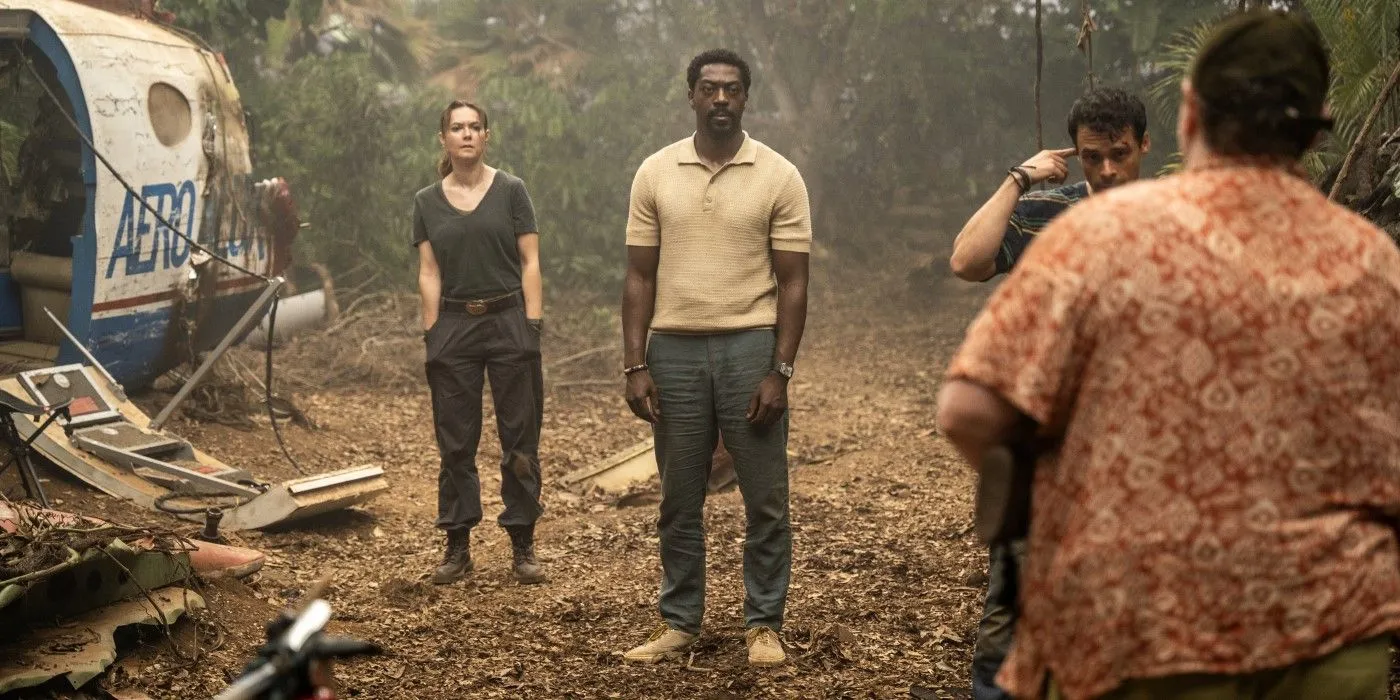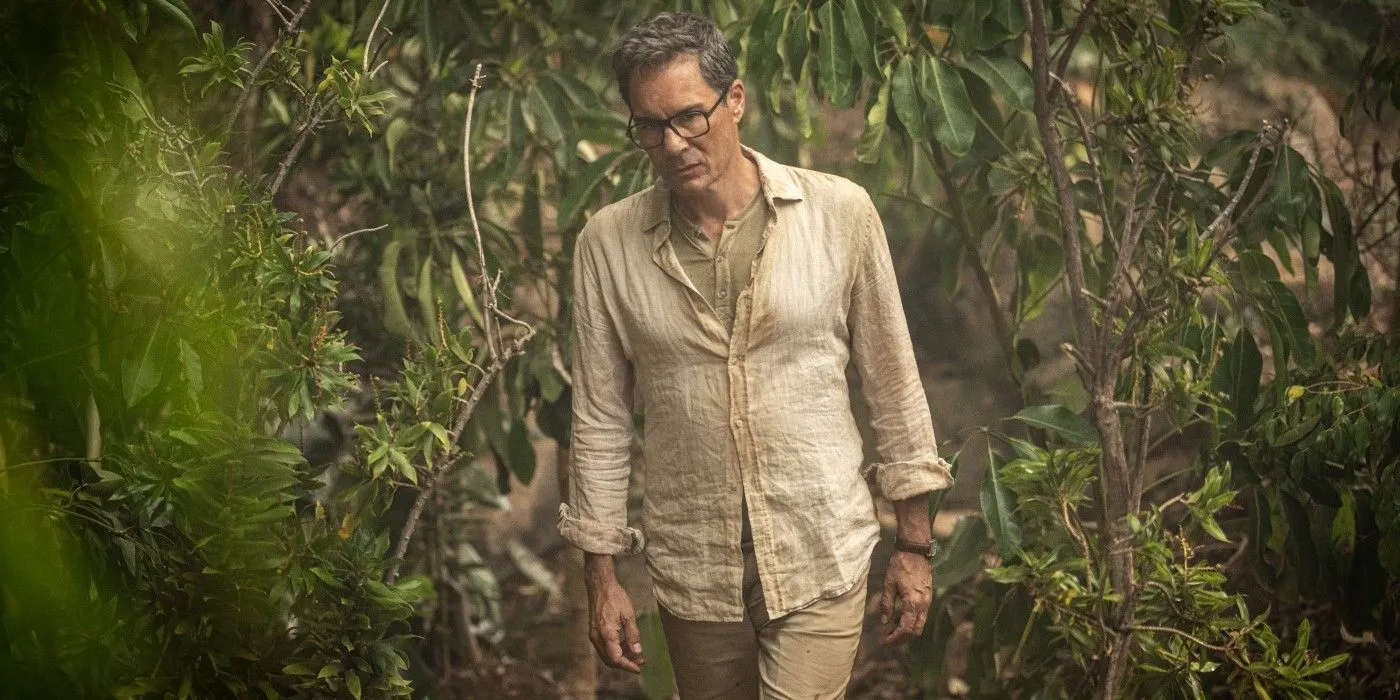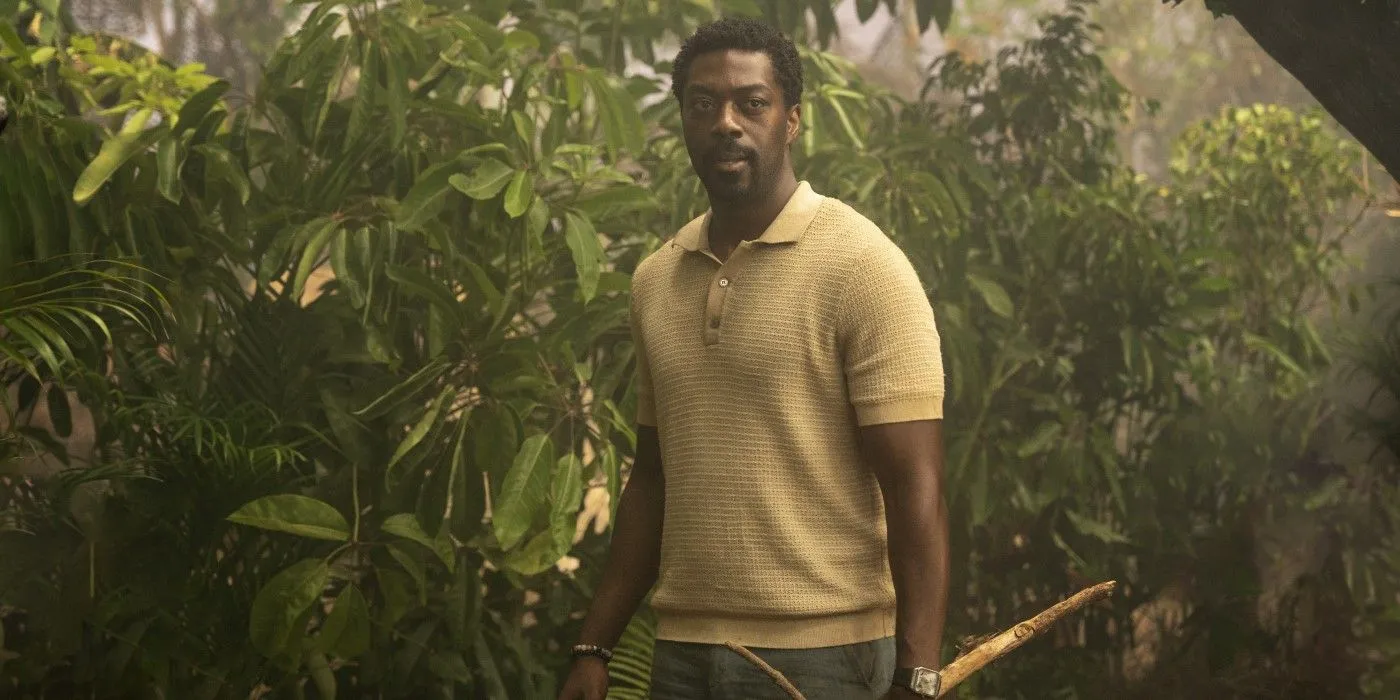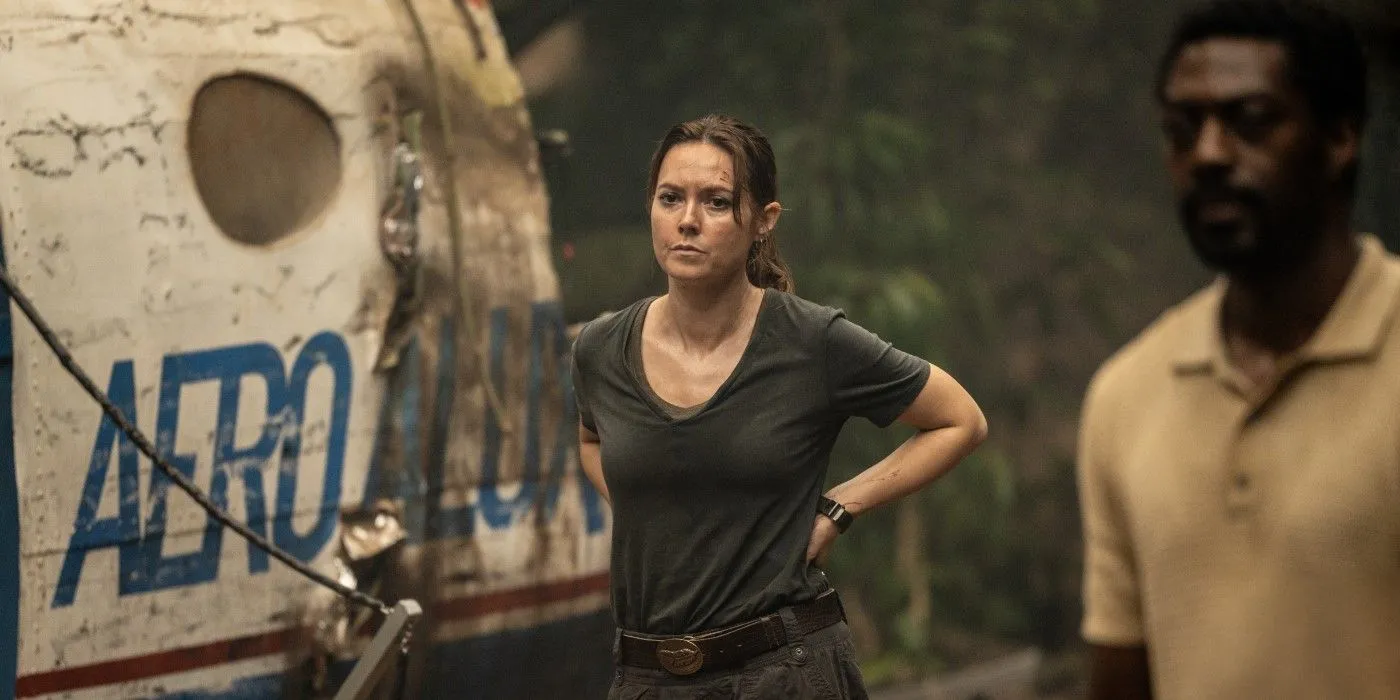Nine Bodies in a Mexican Morgue, Season 1, conceived by Anthony Horowitz for MGM+, offers a fresh take on the murder mystery by inverting expectations—those who fall victim find themselves thrust into investigative roles.
The series sets its stage with a plane crash that leaves survivors in an isolated environment, forcing characters to confront both a physical catastrophe and internal conflicts. This reimagining of familiar crime narratives provides an opening that challenges standard formulas, creating a platform where every casualty may hide secrets waiting to be uncovered.
The series carries a measured, tension-laden atmosphere that slowly unfolds its layers of mystery. Its narrative, structured around strategic flashbacks and careful scene transitions, creates moments that invite viewers to reflect on deeper social themes.
The ensemble cast, drawn from varied backgrounds, contributes significantly to the depiction of modern societal issues, offering a window into contemporary discussions on representation.
Characters are crafted with distinct personal histories, suggesting that every individual carries cultural and social imprints that influence their actions. This approach encourages viewers to consider the intersection of media and the evolving social fabric, setting the stage for further examination of its cultural resonance.
Plot and Narrative Structure: Unraveling the Mystery
A catastrophic plane crash sets the stage for a tale of survival and hidden secrets. The narrative introduces a scenario where a group of individuals finds themselves stranded, forced to confront not only the aftermath of disaster but also a series of unexplained deaths.
The discovery of several bodies and an extra passport immediately sparks curiosity and suspicion. This setup compels characters to assume investigative roles, transforming ordinary victims into active pursuers of truth.
Their newfound responsibilities create an atmosphere where personal histories and concealed agendas quickly surface.
The series employs flashbacks and flashforwards, using these devices to reveal layers of backstory gradually. This non-linear storytelling approach serves to maintain suspense and encourage active participation from the audience.
Rather than following a straightforward timeline, the plot introduces snippets of past events alongside hints of what may come, prompting viewers to piece together clues on their own.
The reverse engineering of the murder mystery format challenges expectations by shifting the focus from mere victimhood to active investigation, prompting questions about motive, opportunity, and hidden identities.
As the plot advances from its dramatic opening, the layers of the mystery begin to multiply. Interwoven subplots and interactions among characters provide additional depth, with each personal story contributing to the collective puzzle.
Moments of levity contrast with the inherent tension of the investigation, revealing unexpected aspects of character behavior and decision-making under pressure.
The narrative takes risks with its structure, occasionally presenting challenges that strain coherence; however, the series makes a concerted effort to rectify these moments through careful editing and pacing adjustments.
The unfolding mysteries keep the audience engaged by offering a mix of sudden revelations and lingering ambiguities, ensuring that the investigation remains an absorbing experience throughout.
Scenic Realism and Production Aesthetics
Set against a backdrop of Mexico’s rugged terrain, the series draws the eye with sweeping vistas of mountainous landscapes and dense, wild forests. The choice to film on location provides a tactile sense of place that constructed sets alone cannot deliver.
Authentic sites mingle with purpose-built environments, creating an experience that reflects the cultural nuances of its setting. Every shot seems designed to capture both the stark beauty and the latent tension present in the natural world.
The visual narrative relies on a careful interplay of lighting and camera movement. The use of natural light in outdoor scenes creates long, dramatic shadows that enhance the show’s slow-building suspense.
Interior scenes, crafted in studio settings, employ controlled illumination that contrasts with the unpredictable elements of the landscape. This contrast highlights the difference between the organic environment and the more calculated design of set pieces.
The production design contributes to a mood that mirrors the story’s measured pace. Shifts in lighting accompany shifts in emotion, with bright, open landscapes giving way to tighter, more confined spaces that suggest underlying unrest.
Even the limitations imposed by budget considerations appear managed in a way that keeps the overall aesthetic consistent.
The result is a visual approach that marries environmental authenticity with meticulous design, inviting viewers to appreciate the careful construction behind each frame without overwhelming the narrative with excess polish.
Character Dynamics and Performance Insights
The series assembles a diverse cast that brings multiple cultural narratives to the screen. Kevin, a medical professional whose career and personal challenges form a critical element of his character, serves as a window into contemporary social struggles.
Zack, operating in insurance, provides a counterbalance with a practical, measured outlook that underlines societal skepticism. A photographer offers an artistic perspective that reinforces the significance of visual storytelling in today’s media environment.
Supporting characters, drawn from various ethnic backgrounds and social strata, add layers to the narrative, each contributing their own experiences and social viewpoints.
In early episodes, the portrayals reveal a mix of conventional character roles alongside attempts to offer greater depth. While some figures initially align with expected tropes, subtle moments expose vulnerabilities and unexpected decision-making.
Interpersonal exchanges among the cast expose tensions that speak to broader issues of personal accountability and social pressure.
These interactions highlight the challenges individuals face in extreme circumstances, reflecting ongoing debates about social justice and representation in modern media.
Standout performances emerge through precise, well-timed delivery and expressive body language that transform routine lines into reflective commentary on contemporary life.
A memorable scene featuring a charged exchange between Kevin and Zack not only captures the immediacy of their conflict but also invites the audience to consider the weight of trust and responsibility.
Chemistry between the lead actors is palpable; their shared moments—ranging from brief exchanges in confined spaces to longer dialogues—offer both subtle humor and sincere emotional intensity.
Such interactions provide a glimpse into the potential for television to mirror societal shifts, reshaping how narratives unfold on streaming platforms.
Themes and Symbolism: Societal Echoes in a Modern Mystery
The series twists expected murder mystery formulas by shifting roles: those who fall victim step into the role of investigators. This reversal unsettles established character dynamics and challenges viewers to reconsider familiar narratives.
By recasting victims as seekers of truth, the show offers a commentary on modern identity, inviting an examination of power shifts and societal labels. This narrative device raises questions about responsibility, suspicion, and the balance of authority in uncertain circumstances.
The storyline grapples with issues of survival in extreme conditions, the murkiness of honesty versus deception, and the complexity of moral choices amid chaos.
The stark setting reflects internal struggles, with physical isolation mirroring emotional distances that separate individuals.
The harsh environment acts as a stage where hidden truths emerge and trust becomes a scarce commodity, prompting reflection on the conditions that force people to rely on their inner resources.
Recurring motifs serve as visual cues that punctuate the unfolding drama. A constant tally of victims, scattered flashback images, and deliberate visual metaphors prompt the audience to assemble a larger picture behind the narrative.
These symbols work alongside evolving character journeys, offering hints about the underlying conflicts and social commentaries embedded in the plot.
The interplay between visual elements and personal arcs casts a spotlight on how the show mirrors current societal shifts, casting familiar issues in a light that sparks fresh debate.
Pacing, Tension, and Direction: A Measured Construction of Suspense
The series employs a deliberate pace that allows suspense to build gradually. Scenes alternate between brisk, action-heavy sequences and quieter, dialogue-driven moments, each contributing to a cumulative sense of anticipation.
This measured tempo invites viewers to engage with a narrative that slowly unfurls its mysteries, keeping attention riveted by the interplay of sudden bursts of energy and reflective pauses.
Techniques such as unexpected cliffhanger pauses, suspenseful reveal sequences, and non-linear flashback interludes punctuate the narrative.
Precise editing produces sharp transitions that heighten uncertainty, with well-timed shifts setting the stage for moments when tension escalates dramatically. These carefully crafted intervals prompt audiences to question what lies beneath the surface of each scene.
Directorial choices establish an environment marked by thoughtful composition and consistent visual style. Creative decisions, made within the constraints of production, shape a tone that remains both methodical and evocative.
Each scene is constructed with a clear artistic vision that hints at the evolving practices of contemporary storytelling.
The series not only sustains suspense through its pacing and editing but also suggests a new direction for televised mysteries on streaming platforms, potentially influencing future narrative frameworks.
The Review
Nine Bodies in a Mexican Morgue Season 1
Nine Bodies in a Mexican Morgue offers a reimagined murder mystery that integrates social commentary with suspenseful storytelling. Its varied pacing and thoughtful narrative present refreshing insights, even if production challenges sometimes undercut the tension. The series marks an interesting effort to reflect current cultural issues and reshape mystery tropes on streaming platforms.
PROS
- Engaging narrative twist
- Visually compelling settings
CONS
- Inconsistent pacing at times
- Production limitations evident

































